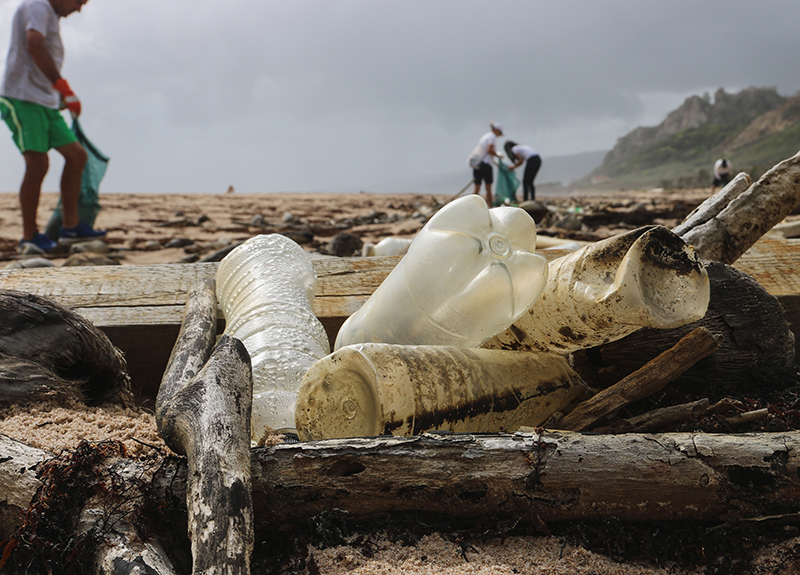Exposure to plastic waste creates a threat to public health that involves a domino effect of environmental hazards. And we are still in the early stages of studying the interplay of how plastic trickles through ecosystems, and just as importantly, how microplastics (plastic fragments measuring less than 5mm in length), can jeopardize human health.
The Institute for Sustainability and Energy at Northwestern University (ISEN) is filling in clues with a network of partners from across academia, industry, and government.
ISEN’s Program on Plastics, Ecosystems, and Public Health (PEPH) is working to understand the interplay of environmental issues and develop solutions to problems caused by plastic contaminants as they disperse. The multidisciplinary culture in PEPH is the key to solving the problem.
“You see a little piece of plastic on the ground. That's not likely to directly impact human health, right? But I see it completely differently.” said PEPH network member John Meeker.
Meeker is a professor of environmental health, sciences, and senior associate dean for research at the University of Michigan School of Public Health. His main research interests are exposure science and environmental epidemiology. This means he identifies how people become exposed to potentially harmful chemicals and the patterns of disease related to those environmental exposures, with the ultimate goal of disease prevention.
Professor Meeker notes that there are still many questions about plastics and human health that need to be answered given the ubiquitous nature of plastic waste in the environment. For example, many consumer products include plastic additives, a wide range of chemicals that are added during the plastic-making process that can leach into water, air, and plants and eventually make their way into the human body. A number of these chemicals have been shown to disrupt endocrine function, which can result in a wide range of downstream adverse health effects.
"Once plastic particles get into the body, we know virtually nothing about how they might be processed or metabolized, or how they interact with our bodily systems.” — Professor John Meeker, University of Michigan and PEPH Researcher
According to Meeker, researchers are getting a better grasp of the human health effects of many common additives—which are typically ingested while using plastic consumer products or containers for things like food and water. These are known as primary exposure pathways to these contaminants.
However, secondary exposure—the microplastics and additives that break down and get dispersed during normal product use, or after ending up in the environment or in landfills, and eventually make their way into the human body—still needs more research since the risk of exposure may be quite large.
Educating the public about the issue is critical, and some additives are already being replaced by less toxic substitutes, Meeker said. However, many of those replacement additives have not undergone extensive toxicology testing, so the potential human health risks related to their increased use remain unknown. He and others continue to research important questions related to eliminating harmful chemicals in consumer products and minimizing risks to human health.
“If humans are ingesting or breathing these small plastic particles, how does that interact with the body? Could microplastics—or more likely, nanoplastics—get small enough to penetrate certain types of membranes [in the human body] that could be detrimental to various organs and systems?” he said. “Those are the things we really don’t know yet. Once plastic particles get into the body, we know virtually nothing about how they might be processed or metabolized, or how they interact with our bodily systems.”
Given the widespread use of plastics worldwide, Meeker and other researchers are searching for answers to these questions with increasing urgency in recent years.
Programs such as PEPH at ISEN bring together scientists and experts to solve these and similar environmental issues. “Research universities like Northwestern and the University of Michigan have a lot of expertise in a lot of different areas,” Meeker said. “What I like about the program is that it includes the perspectives of people outside of academia, with government and industry as well. The program does a great job of building interdisciplinary expertise. Being able to work across disciplines is going to be extremely important for this type of complex problem.”







